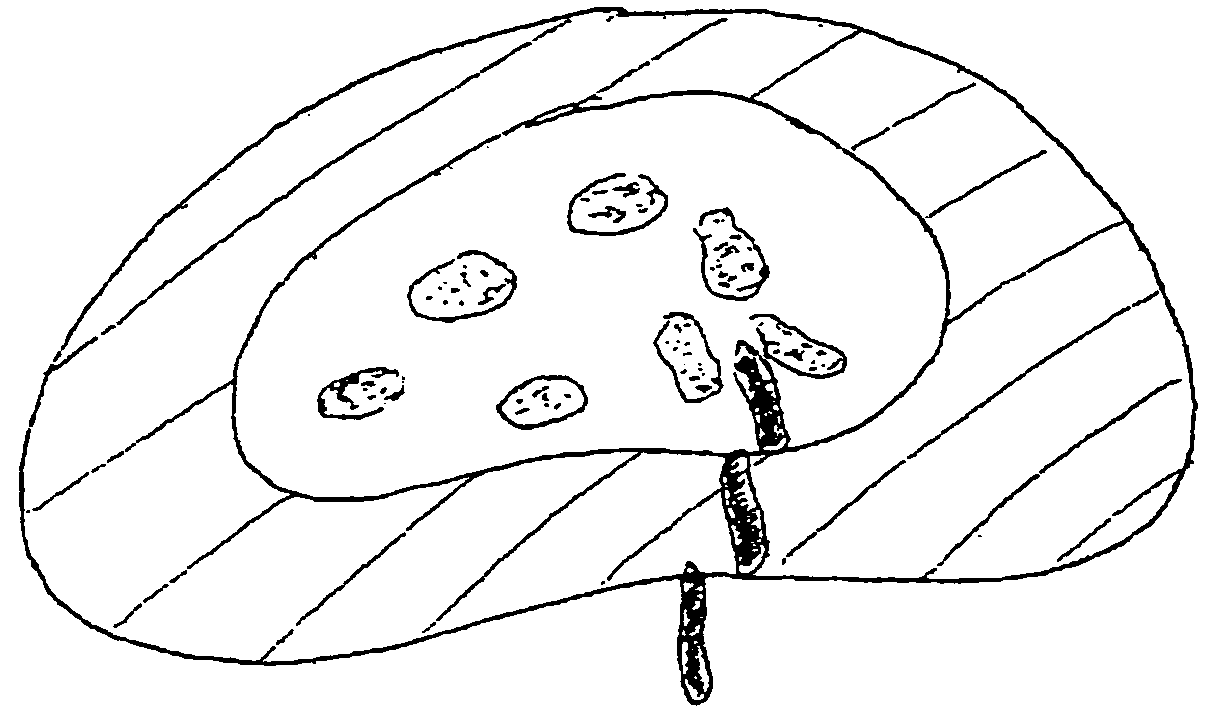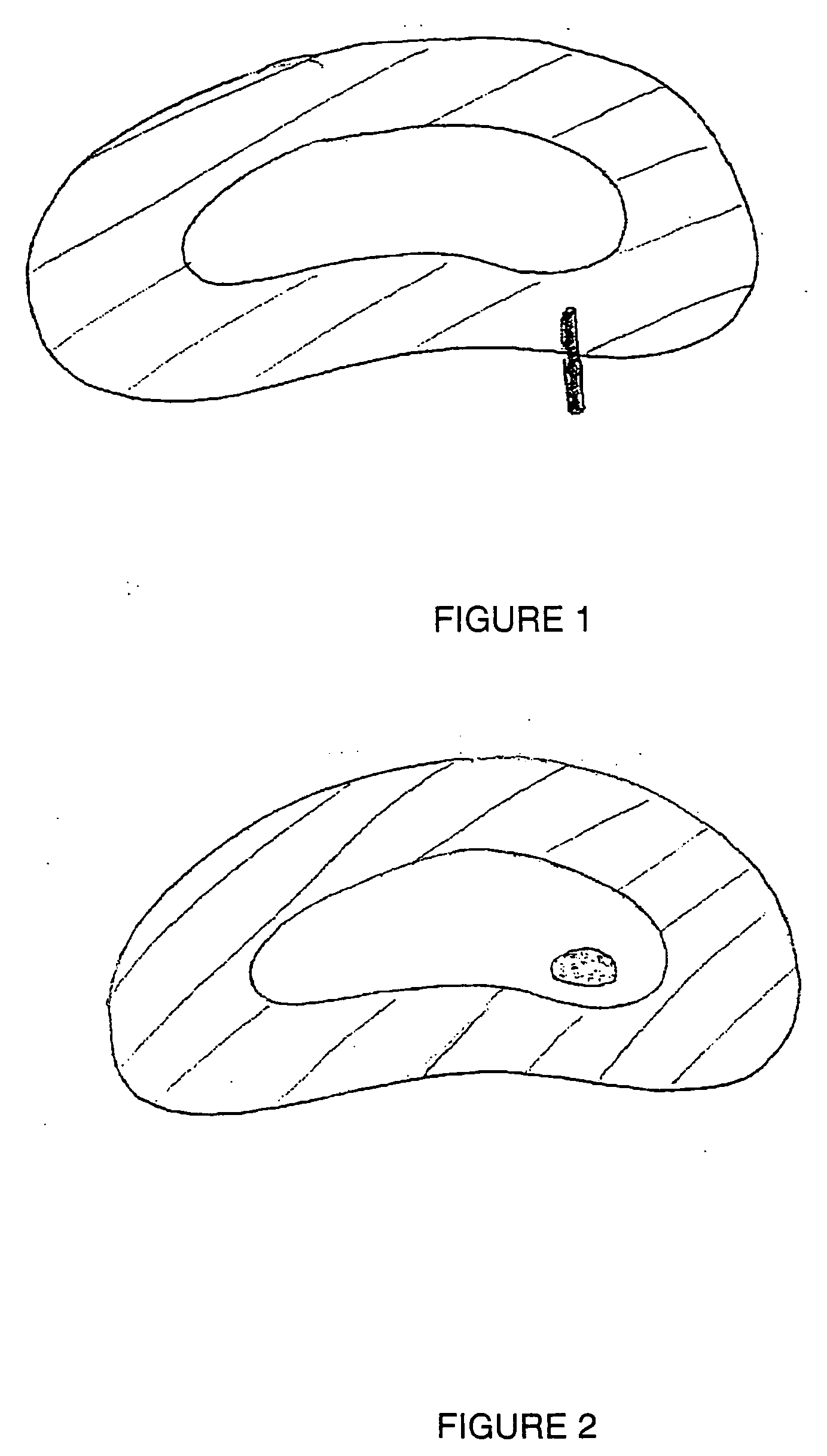Disc augmentation using materials that expand in situ
a technology of in situ expansion and disc augmentation, applied in the field of spinal surgery, can solve the problem of frequent extrusion of hydrogel devices
- Summary
- Abstract
- Description
- Claims
- Application Information
AI Technical Summary
Benefits of technology
Problems solved by technology
Method used
Image
Examples
Embodiment Construction
[0019] The disc augmentation devices and method described herein take advantage of materials that change shape and / or consistency when placed into a disc. Various materials qualify for this purpose according to the invention. Materials that change shape with temperature include memory-effect alloys such as Nitinol and substances such as stearle methacrylate. Materials that change in shape in the presence of moisture include hydrogels and other substances that imbibe water. Materials that expand due to chemical reaction include various foams, and the like, some of which may be applied in two-part form.
[0020] In the preferred embodiment, for introduction the material is relatively rigid or hard and relatively thin, resembling a needle or a nail. The size, shape, and consistency of the material allow the device to be pushed through the fibers of the annulus fibrosis, preferably without an incision, and into the nucleus pulposus and / or disc space, as shown in FIG. 1.
[0021] Once inside...
PUM
| Property | Measurement | Unit |
|---|---|---|
| temperature | aaaaa | aaaaa |
| chemical | aaaaa | aaaaa |
| shape-memory properties | aaaaa | aaaaa |
Abstract
Description
Claims
Application Information
 Login to View More
Login to View More - R&D
- Intellectual Property
- Life Sciences
- Materials
- Tech Scout
- Unparalleled Data Quality
- Higher Quality Content
- 60% Fewer Hallucinations
Browse by: Latest US Patents, China's latest patents, Technical Efficacy Thesaurus, Application Domain, Technology Topic, Popular Technical Reports.
© 2025 PatSnap. All rights reserved.Legal|Privacy policy|Modern Slavery Act Transparency Statement|Sitemap|About US| Contact US: help@patsnap.com



